Croatia: Life in pictures
- Published
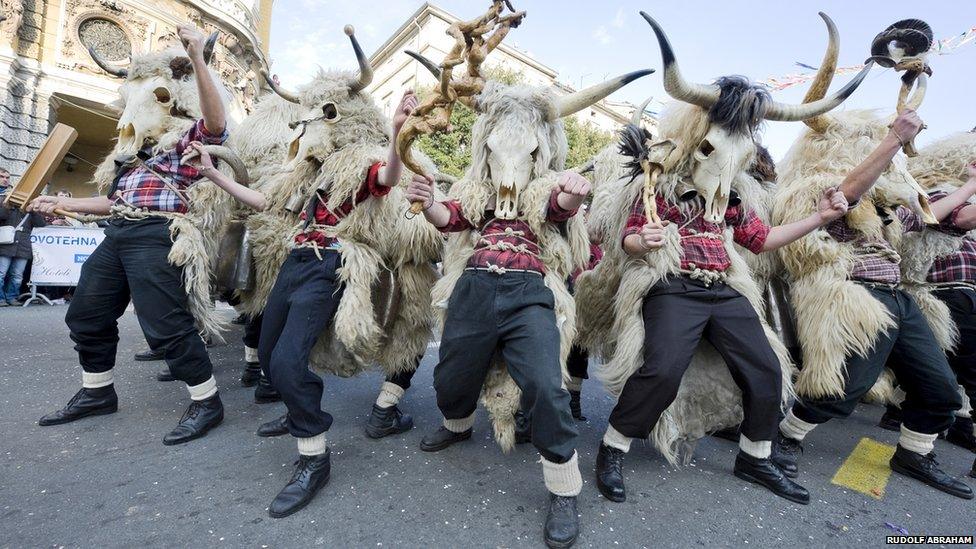
This series of photographs was taken by Rudolf Abraham, an award-winning photographer and writer specialising in Croatia and Eastern Europe. Here, Zvoncari or 'bell ringers', march through the streets at the Rijeka Carnival, one of the largest Shrovetide Carnivals in Europe. Traditionally the Zvoncari go through villages before Lent, to drive out evil spirits which might have settled there during the winter months.
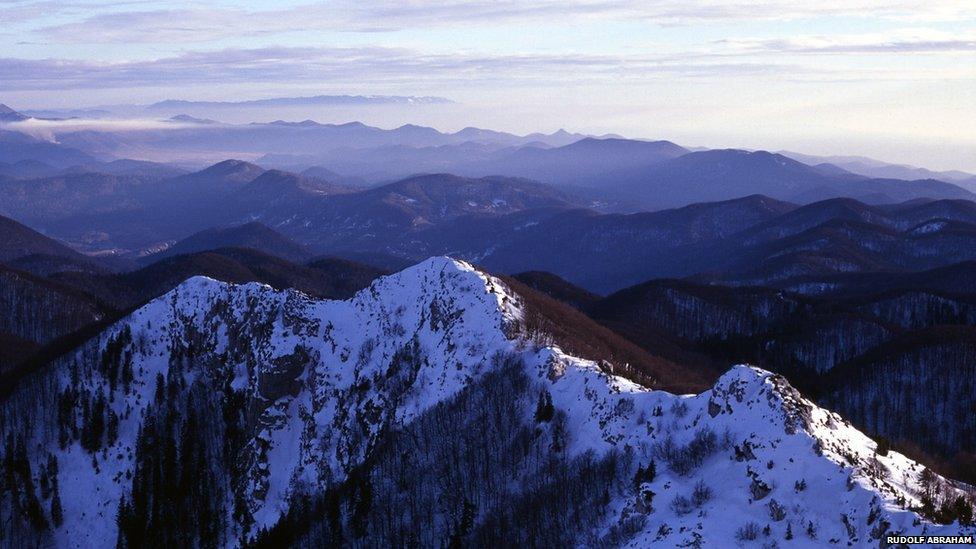
A view of Croatia's Risnjak national park in winter, part of the Dinaric Alps which stretch east to Serbia and as far south as Montenegro. This view is taken from the highest peak, Veliki Risnjak, which is 1,528m high.
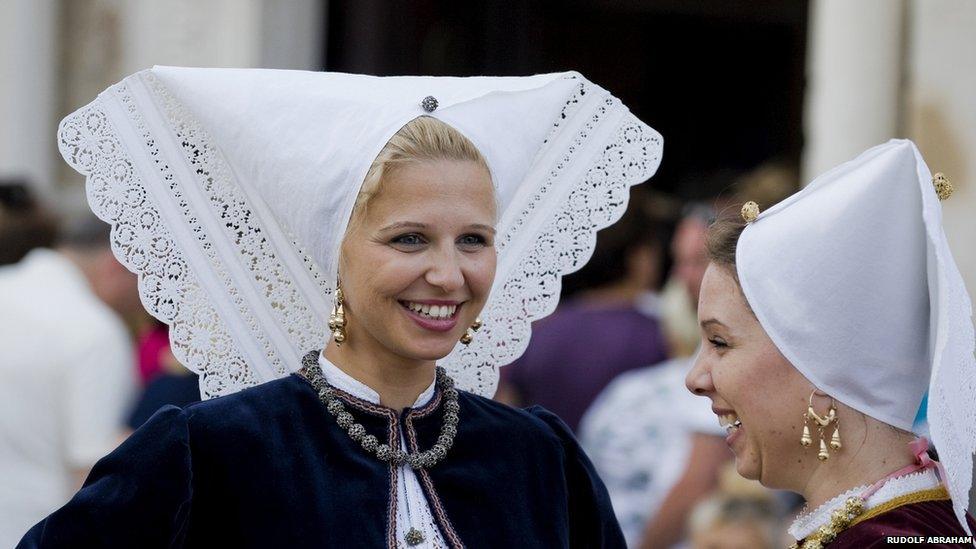
Croatian women in traditional local folk costume, during a procession on Assumption Day on the island of Pag. Following an all night vigil, a statue of the Virgin Mary is carried from a shrine in the old town to the Church of the Assumption of the Virgin Mary in the town centre.

Winter in Plitvice lakes national park, a Unesco World Heritage Site, Croatia. Waters flowing over limestone and chalk over thousands of years have created natural dams which in turn have produced a series of beautiful lakes, caves and waterfalls.
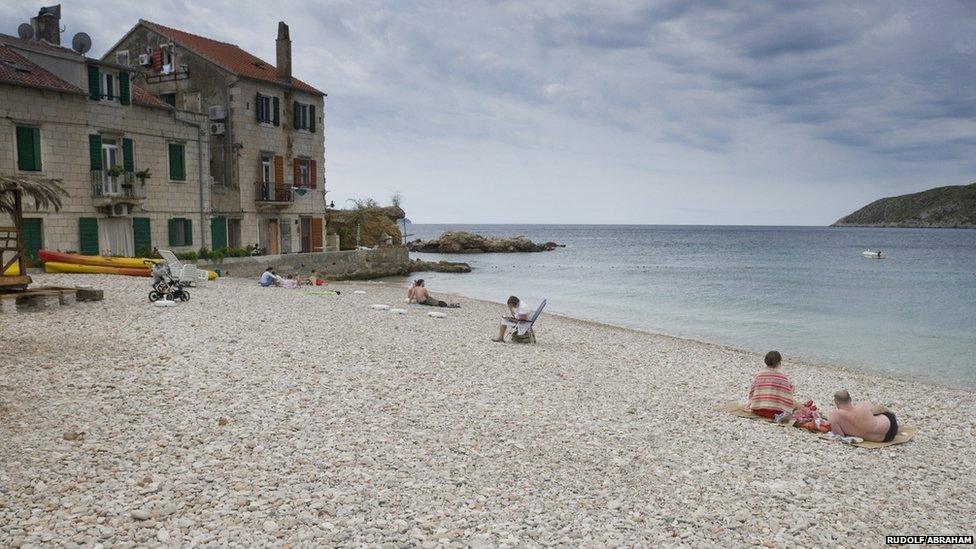
Beach in Komiza, on the island of Vis, one of the many inhabited islands off the Dalmatian coast of Croatia. Vis was used as the World War II base of the Partisan leader Josip Broz Tito who went on to become Yugoslavia's president until his death in 1980.
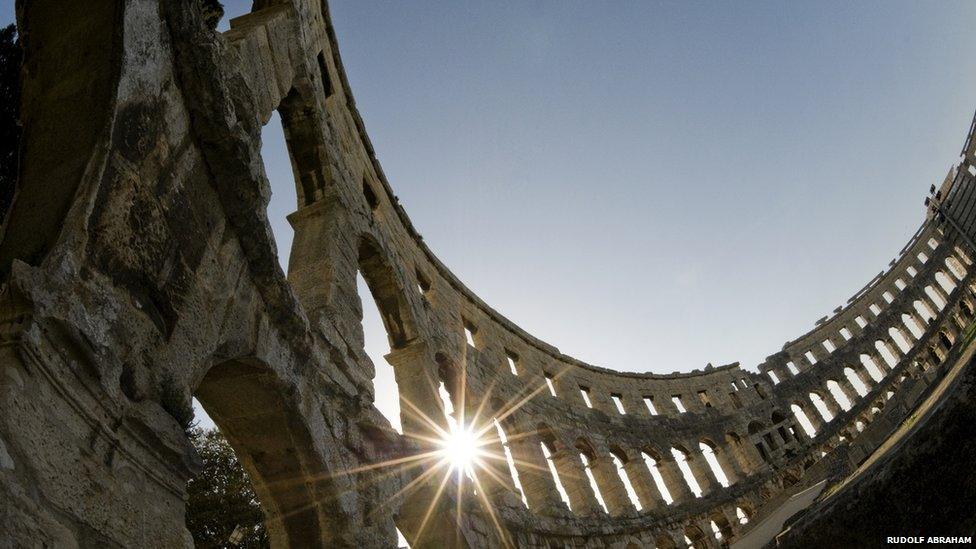
The exceptionally well preserved Roman amphitheatre at Pula, Istria, in western Croatia. Dating from the 1st Century AD, it is one of the largest surviving such monuments in the world. Today, it hosts concerts and even the occasional professional ice hockey match.
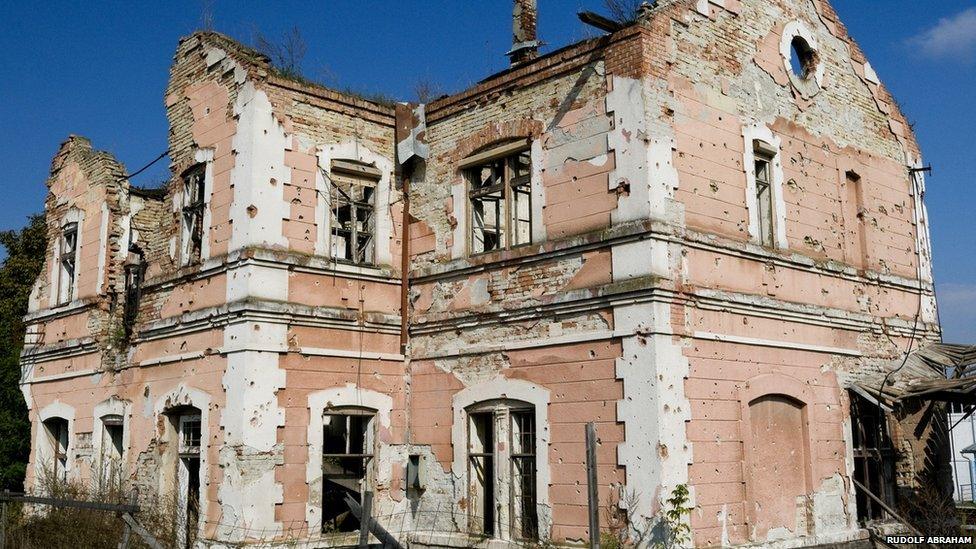
A war damaged building in Vukovar, eastern Croatia. The city was the scene of bitter fighting during the country's war of independence when ethnic Serbs, with the backing of neighbouring Serbia, resisted Zagreb's move to break away from Yugoslavia.
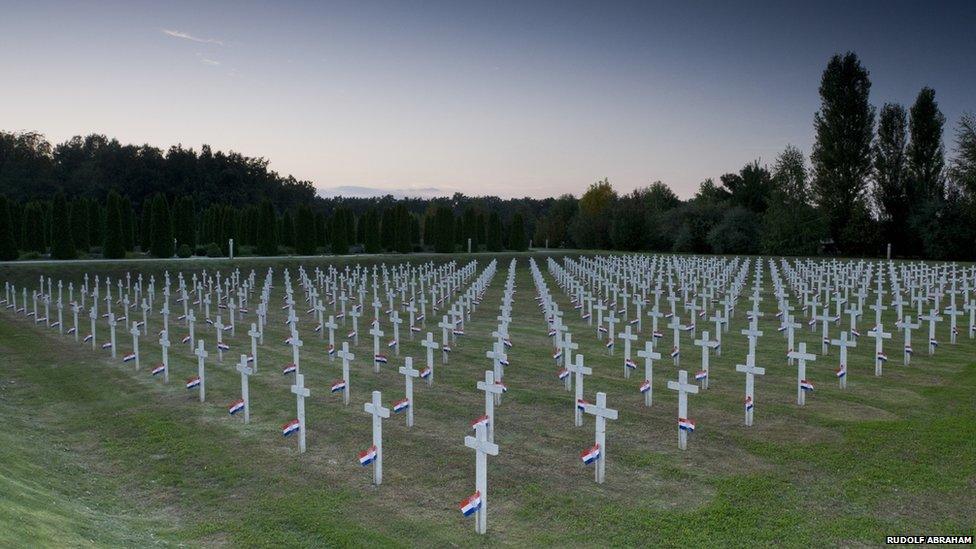
This war cemetery commemorates those killed in one of the most notorious incidents of the war of independence. More than 260 people were taken from Vukovar hospital after it fell to Serb forces in 1991 and killed on the site of a farm in Ovcara, just outside the city.
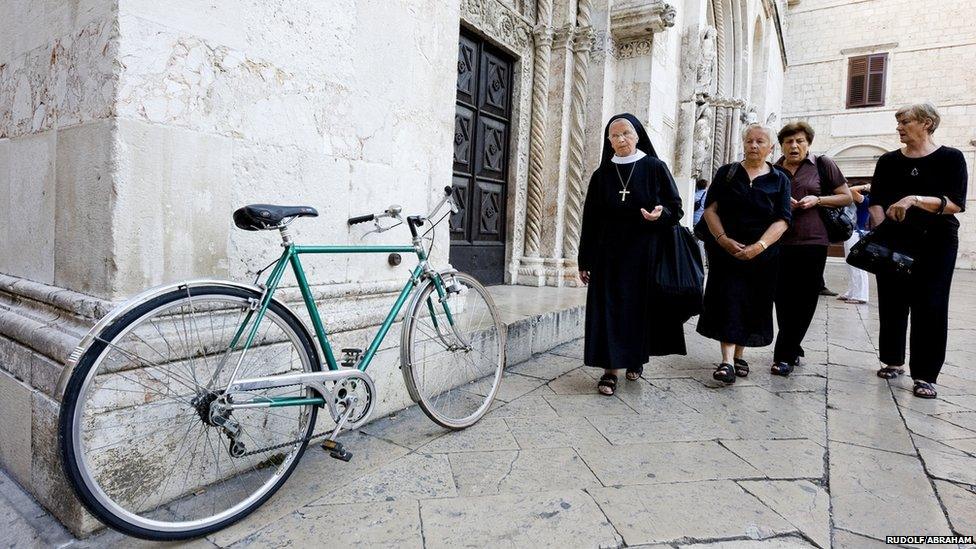
Women outside the Cathedral of St Anastasia, Zadar, a picturesque city on Croatia's Adriatic coast.

Croatia's range of islands have become a popular tourist destination. This is the village of Racisce, on Korcula, one of the larger islands just off the Dalmatian coast.
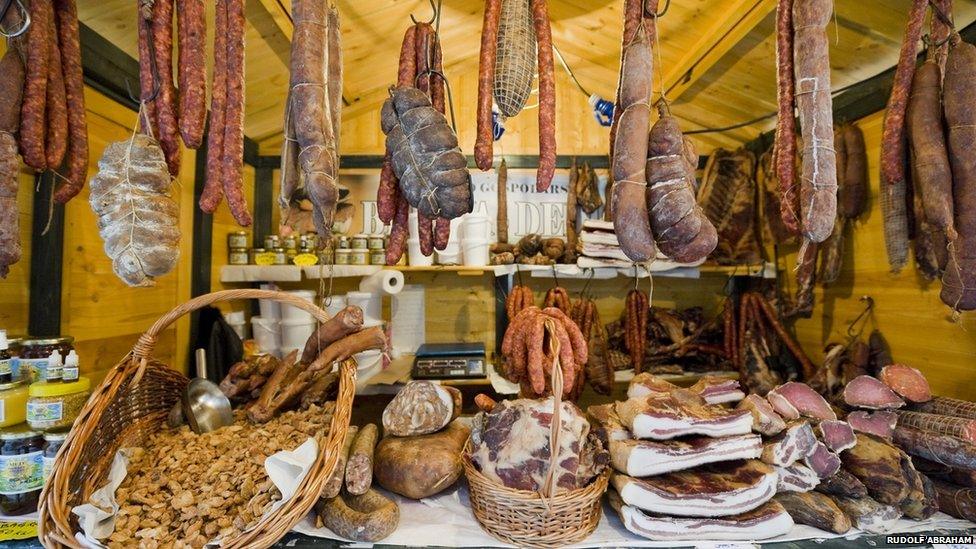
Charcuterie is a key part of traditional Croatian cuisine which draws on influences of Slavic, Mediterranean and other cultures from neighbouring countries. This is a stall on a street off Zagreb's main square, selling cured meats during the weekend before Lent.
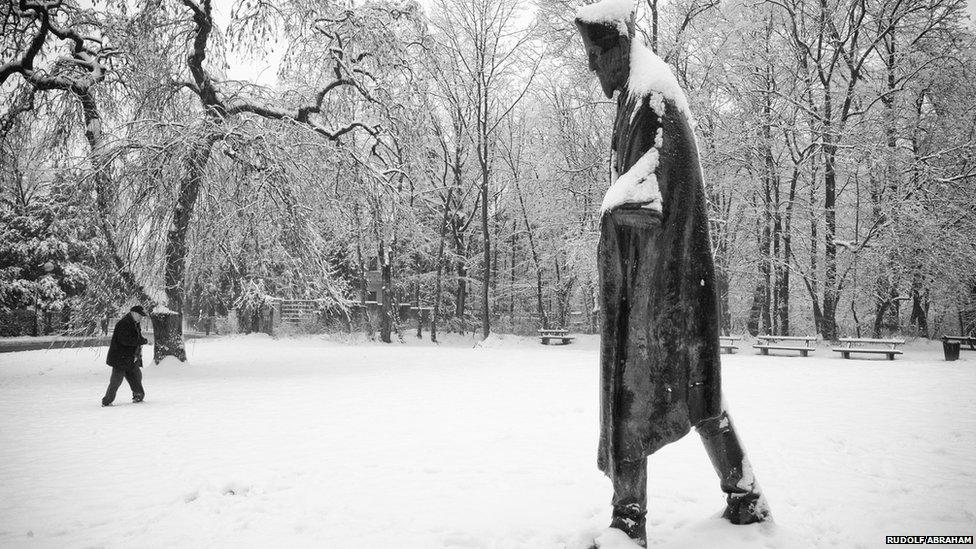
Sculpture of Vladimir Nazor, in one of Zagreb's city parks. Nazor was a Croatian poet who led the anti-fascist movement in Croatia during World War II and later became the head of state of the People's Republic of Croatia.